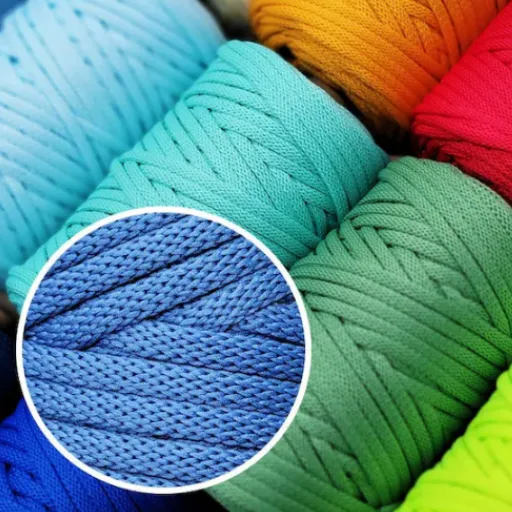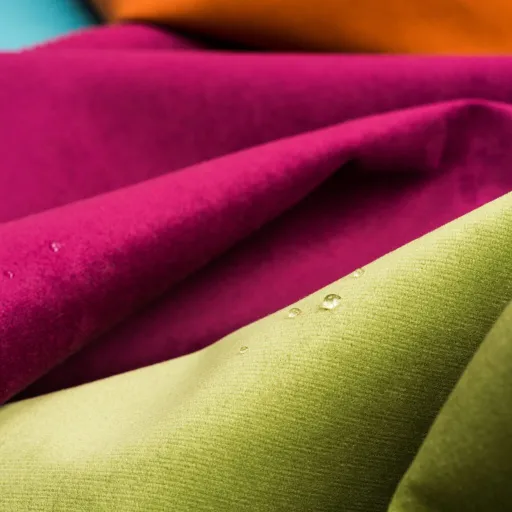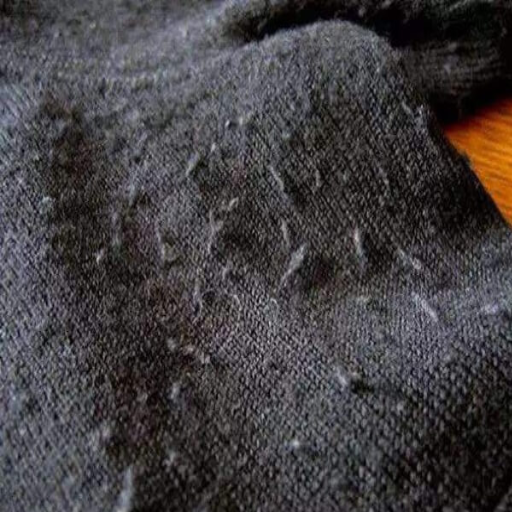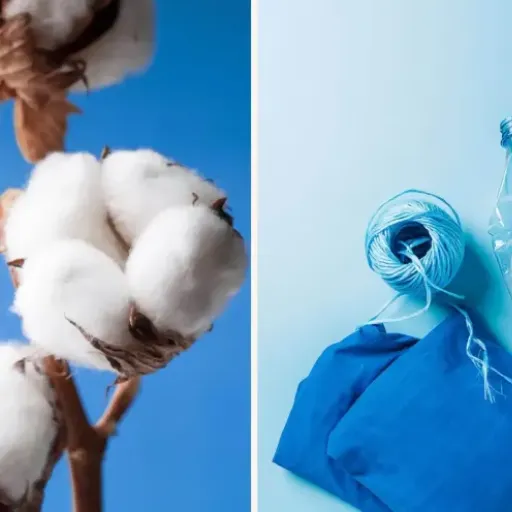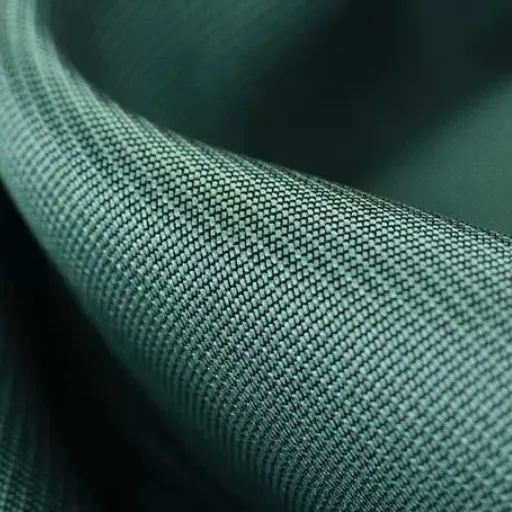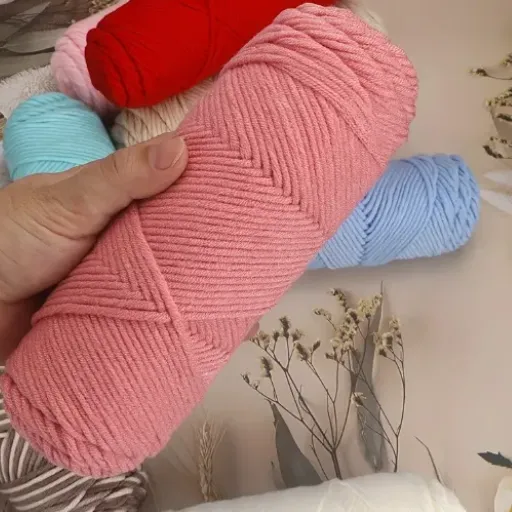When it comes to choosing the right fabric for clothing or home textiles, the debate between polyester and cotton often takes center stage. Both materials offer unique benefits and cater to different needs, but understanding their core differences is key to making an informed decision. Polyester is renowned for its durability and resistance to wrinkles, while cotton is celebrated for its natural softness and breathability. This article dives into the distinctive qualities of each fiber, exploring their strengths, weaknesses, and ideal uses. Whether you’re seeking long-lasting performance or ultimate comfort, this guide will help you weigh the pros and cons of polyester and cotton to determine which is the better fit for your lifestyle.
Introduction to Polyester and Cotton
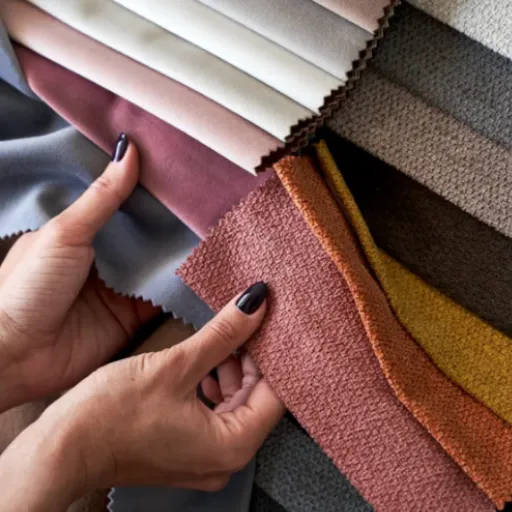
Overview of Polyester Fabric
Polyester is a synthetic fabric that is known for being durable, versatile, and easy to maintain. It is made from petrochemical-based fibers and offers the advantage of not shrinking, stretching, or wrinkling against temperature or water, being put to many uses. Because this fabric is lightweight, quick-drying, and holds its shape well, even after many repetitions in different washes, its performance is long-lasting.
The highlight of polyester is moisture repelling, which makes it a go-to fiber for activewear and outdoor clothing. On the other hand, moisture resistance makes it less breathable than its natural competitors, such as cotton. To increase comfort and airflow, polyester is often woven with other fibers to guarantee maintainability.
In spite of having numerous advantages, polyester has a few disadvantages. One, it usually builds up static electricity, which can hold onto scent if the material is not treated well, thus impinging upon wearability. The other being environmental impact, since it is generated from non-renewable resources. Recent development in recycling technologies, however, has made recycled polyester possible, opening an alternative for those who disapprove of its meteoric rise to dominance for other reasons.
Fabric of Cotton: Overview
Cotton is among the most popular natural fabrics due to textile comfort, breathability, and versatility. For centuries, cotton has found its place in the fabric industry due to its softness and absorbency with regard to moisture. Being a natural fabric, it is biodegradable and hence considered environmentally good compared to synthetics.
When we speak of one primary advantage of cotton fabric, it is comfort. A cotton fabric is soft and comfortable against the skin and can go as great wear for days in any climate. Being breathable in nature, air passes through it and helps keep the body temperature comfortable, especially during warm weather. This moisture-wicking nature is what makes cotton suitable for activewear or casual apparel.
Cotton, however, has limitations. It may shrink after washing unless extra care is taken during laundering to keep it in its original shape. On the other hand, though cotton is a natural substance, its cultivation methods often exert a bad influence on nature due to forcing contribution of heavy use of pesticides coupled with water-intensive methods of farming. More and more sustainable methods are being promoted these days to give an alternative to environmental consciousness, like organic cotton farming.
Importance of Understanding Fabric Differences
Understanding fabric differences is crucial for people who want to make informed decisions when purchasing, using, or caring for clothing and textiles. Different fabrics have different characteristics that affect their durability, comfort, maintenance, and environmental impact. The knowledge of these traits will help consumers in selecting the fabrics that best suit their needs but to also take into consideration their sustainability issues.
Natural fibers such as cotton and wool, for example, are breathable and comfortable, but they may need to be cared for in a certain way so that they last well. Synthetic fabrics, on the other hand, tend to be more durable and water-resistant from staining but would not be as comfortable as natural materials. Fabric blends might have some of the benefits of each fiber; however, knowing what a fabric is made from will give you a better idea of its long-term performance.
Environmentally speaking, it is necessary to know more about the differences among fabrics. Sometimes natural fibers are costly to the environment given the water-intensive cultivation or pesticide usage, whereas synthetic fabrics contribute to microplastic pollution. This understanding enables customers to make choices based on their own values, such as choosing sustainable materials like organic cotton or recycled polyester. Such knowledge empowers and enables people to support the transition of the textile industry toward a greener direction.
Comparative Analysis: Polyester vs Cotton
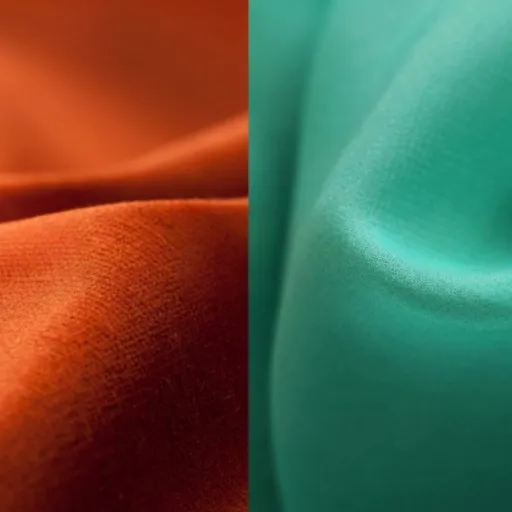
Durability: Which Fabric Lasts Longer?
In the case of Polyester, one would say that it has greater longevity than Cotton, by virtue of being a synthetic fiber. The strength in the fiber and resistance from abrasion by polyester makes it suitable for prolonged exposure to various environmental conditions. This fabric is not really capable of shrinking, stretching, or fading in due course of time, thus contributing toward the durability reputation that the fabric has achieved.
On the other side, cotton is a natural and biodegradable fiber that would, with frequent washing and heavy use, tend to wear out. Cotton fabrics may feel softer and more breathable. Yet, their fibers get weaker with moisture, heat, or mechanical stress from washing in a kinetic way. There goes a time when cotton garments would shrink, lose shape, and become thinner.
The preferred choice for undesirable factors like durability is polyester. It resists damage perfectly and is an ideal fabric for the manufacture of products that must endure heavy use. Conversely, cotton might really become the preferred alternative for a consumer who ranks comfort and sustainability higher.
Breathability: Cool in the Summer
The cotton fabric is generally considered among the most breathable fabrics. Therefore, it becomes an excellent choice in keeping cool during summer. The air moves quite freely through its natural fiber, thus, avoiding heat build-up and allowing ventilation. This helps in keeping the skin dry and comfortable even on the hottest days, as cotton can absorb the sweat and hastens evaporation. Polyester, meanwhile, is poorly breathable yet possesses moisture-wicking properties that may appeal to those indulging in physical activity. That means polyester would draw the sweat away from the skin and further encourage faster drying, a real plus when working out. But it is not however as airy as cotton, which means it could be less comfortable when it gets really warm and humid.
Ultimately, the choice between cotton and polyester for summer wear hangs on the intended use. For all activities where comfort and breathability are given priority, cotton will tend to get the nod. Polyester would fit into scenarios where moisture management has to get carried out, like sports and outdoor workouts. Both fabrics carry with them their distinctive traits and excellence, making them flexible with how they can be applied in the summer.
Comfort: Feel Against the Skin
Often by virtue of being considered soft and natural to the touch, the cotton textile is often favored for daily attire. Cotton is quite particularly appreciated by persons with sensitive skin as it usually does not irritate their dermis and provides good air circulation. Thus is this cotton is made lighter and more breathable, and hence more comfortable to wear in summer months.
Polyester, on the other hand, has a somewhat sleeker feel and less-natural touch in comparison to cotton. Although the feel of polyester has been adapted and improved with advances in textile technology, the polyester fabric tends to soak in heat and may become uncomfortable the longer one wears it in hot and humid atmospheres. However, thanks to its moisture-wicking nature, polyester is favored in the making of garments for exercising activities where dryness is of utmost concern.
Hence, in the very end, the best comfort fabric depends on individual whims plus the occasion. Cotton is immensely soft and breathable, given that cotton works wonders, especially for casual attire or in hot climates. Polyester goes well with any active setting or where the stay-dry-with-the-know-how benefit is paramount, albeit with a bit otherwise synthetic feel.
Cost-Effectiveness: Polyester Fabric vs Cotton
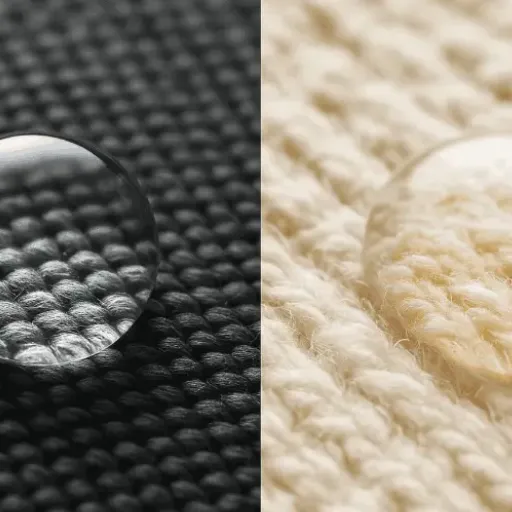
Initial Cost Comparisons
Talking of initial costs, polyester is regarded as cheaper than cotton. Polyester is a synthetic fiber that can be manufactured on a large scale at a lower price; this results in polyester becoming generally available and, hence, cheaper in price. This presents a very attractive option for consumers or industries with an inclination to cut costs on the front of expenses.
Being a natural fiber, cotton usually tends to demand more resources–land, water, labor–in its production process. These factors attribute to higher initial costs for cotton compared to polyester. Organic cotton, in particular, is usually more expensive because of extra sustainability processes.
Mostly, choosing between polyester and cotton cost-wise depends on other considerations of budget. Polyester is the cheap way to go, while cotton, at higher prices, may be warranted by ways of natural feel, comfort, and long-term value in some applications.
Long-Term Value and Maintenance Costs
Looking at the older value and maintenance costs, one can see that each material has pros and cons. Polyester is often very good in durability. It resists shrinking, wrinkling, and stretching; making it good for products that retain the given shape and stay functional for a very long time with just a bit of care. Further, polyester dries faster and is also highly stain-resistant, all factors that lessen the maintenance time and cost in the long term.
On the other hand, cotton products mostly call for more care and maintenance. Cotton wrinkles with pressure and sometimes shrinks, with repeated washing, leading to further degradation. It takes a special washing condition and care to safeguard the textures and qualities inherent in cotton in the course of time. Yet, the high air permeability and soft touch of cotton make it extremely comfortable, especially for those who are, indeed, looking for natural fibers, thus posing it as worthy of extra maintenance.
Ultimately, one must decide about price and long-term care according to his or her priorities. If maintenance and durability are less of concern, polyester can be a practical choice. However, when comfort, ecological value (in the case of organic cotton), and natural feel outweigh the more high-maintenance care and the initial investment of the cotton fiber, cotton might be considered more worthwhile. The decision should be based upon the objective conveniences and the subjective preferences of the intended use.
Impact of Fabric Choice on Budget
Fabric choice can mean the world for your budget, with procurement costs, life expectancy, and maintenance being factors at play. Natural fabrics such as cotton generally carry a higher purchase price owing to cultivation and processing. However, given the life span these fabrics have with a little care, they can offer handsome returns, economically, marking them as a living investment.
Keep in mind that synthetic fabrics like polyester tend to be kept low on the price chart through mass production and require not honing in on any particular maintenance, hence saving costs over time. But, because of lesser life span and comparatively less comfort given by their natural counterparts, they might call for more replacements, thus being an immediate hit to your budget. Ultimately, an effect on the budget would come through how often one uses and washes these articles.
Setting budget against value is an important balancing act in fabric selection. When it comes to fabric options, if your interest leans towards upfront cheapness, then synthetics are your alternative. But, if you are spending on long-lasting articles or on sustainability, then natural fabric such as cotton can be much more at home with your budget and values. With the proper and thorough assessment of the intended use and its lifespan, one can always choose the most pocket-friendly option.
Environmental Footprints: Cotton and Polyester
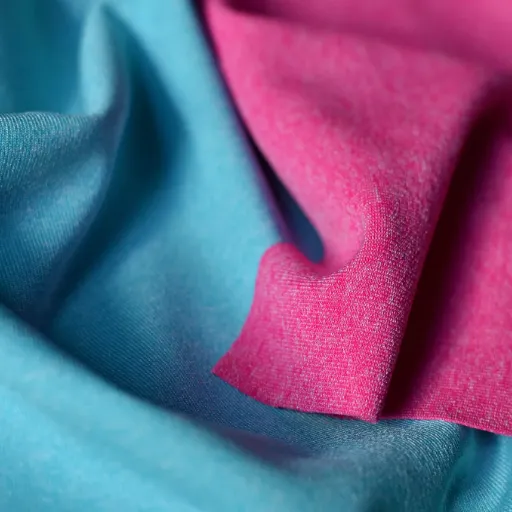
Conventional Cotton vs Organic Cotton
The two kinds of cotton differ principally in terms of farming practices and their impact on the environment. Organic cotton is grown without any synthetic pesticides, fertilizers, or GMOs. This method helps in soil conservation, preventing water wastage, and reducing hazards to wildlife and farm workers. Conventional cotton uses a lot of chemical substances and GMO seeds that can degrade the quality of soil and pollute the water bodies near the cotton-growing areas.
Organic cotton, also, is eco-friendly, with its number-one advantage being the lesser carbon footprint. In contrast to conventional farming, organic farming principles such as crop rotation and composting go a long way toward carbon sequestration in the soil. It further applies less water flow compared to conventional cotton, for organic systems watch to use rain as a primary source of irrigation rather than heavy irrigation. Yet, often, in increasing efficiency by yield, organic cotton may be regarded as less efficient than that of its conventional counterpart: it requires more land growing the same quantity of fiber.
While organic cotton provides an eco-friendly alternative, it typically carries a higher price tag arising from costly farming methods and certifications. Conventional cotton is cheaper and more readily available but poses an increased risk to the environment and society. Consumers must consider the environmental implications and their financial capacity before making their choice, remembering that supporting organic cotton means moving toward more sustainable practices with a lesser environmental footprint.
Environmental Impact of Polyester Production
In a nutshell, polyester production is the environmental indicator, being largely dependent on the petroleum industry. The extraction of petroleum products and their processing cause emissions of greenhouse gases, thus contributing to climate change. Production of polyester fibers itself requires an enormous amount of water and electricity in an energy-intensive process, consequently enhancing its carbon footprint.
When it comes to their environmental presence, the greatest worry lies in the release of microplastics into water bodies during washing of polyester-based fabrics. These wee particles find their way into our water systems via wastewater. Microplastics present a danger to marine ecosystems as they are ingested by aquatic organisms and potentially disrupt the food chain. And so, the implications of this phenomenon run deep for both environmental and human health.
Polyester recycling is considered as one of the ways to reduce the environmental impact of polyester but it is not without its limitations. While recycled polyester creates less demand for fresh petroleum, its production entails carbon emissions and microplastic pollution is still an issue paid little heed to. The solution to the greater environmental problem that polyester presents lies in a shift toward sustainable alternatives and running effective waste management systems.
Recycling and Sustainability Considerations
Recycling and sustainability efforts in the textile industry are critical to addressing the environmental impact of polyester. Recycling polyester reduces the need for virgin petroleum and limits waste, but it is not a perfect solution. During the recycling process, energy consumption and carbon emissions still occur, and the release of microplastics remains an ongoing concern. These issues pose significant challenges to achieving true sustainability through recycling alone.
To improve sustainability, a broader adoption of alternative materials is essential. Biodegradable or plant-based textiles offer a viable path forward, as they are less harmful to the environment and reduce dependency on synthetic fabrics. Governments and industries should also prioritize effective waste management systems, including more accessible recycling initiatives and public awareness campaigns, to minimize pollution caused by discarded textiles.
Ultimately, addressing the environmental issues tied to polyester requires a multi-faceted approach. This includes technological innovations in recycling processes, transitioning to sustainable fabric alternatives, and fostering a culture of conscious consumption. By combining these efforts, it is possible to limit polyester’s negative impacts and create a more sustainable future for the textile industry.
Applications of Each Fabric Type
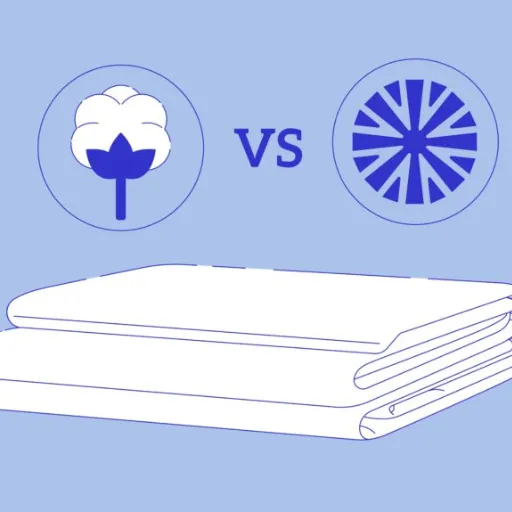
Best Uses for Polyester Fabric
Because of its resilience, resistance to wrinkling, and low cost, polyester fabric finds its application in practically every field of industry. Probably, the major use of polyester fabric is in clothing, especially active and athleisure wear. Due to its moisture-wicking properties and its ability to retain its shape, polyester is best suited for activewear subjected to extensive washing and heavy physical activities. Also, being lightweight makes it comfortable to wear while exercising or for extended time.
Polyester is great for curtains, bed linen, and upholstery in home textiles. Its strength ensures that it will withstand any regular use or exposure to sunlight that may cause shrinking or fading. Also, make it a fabric of households’ choice to keep things easy with stain resists and good looks.
Being of high tensile strength and resilience, polyester finds huge demand in industrial applications such as uses in ropes, tire cords, and conveyor belts. Because of its water resistance and weatherability properties, camping tents and tarps are also widely manufactured using this fabric. These are basically some examples that shed light on the applications of polyester and show how versatile it is-proving its worth in almost every domain one can think of.
Best Uses for Cotton Fabric
Cotton is one of the most widely used fabrics in the entire world, being famous for being natural, breathable, and comfortable. Soft and moisture-wicking, cotton essentially acts as the fabric pertaining to the highest usage for clothing into t-shirts, dresses, undergarments, and casual wear, combining comfort with durability upon repeated washing.
Cotton is also a great textile for the fit-out of houses. Since it is absorbent and retains color well when dyed, cotton is commonly used in bed linens, towels, curtains, and even upholstery. Temporary enhancement and consideration feel live deосрorin activate space yet fulfiul in their own right with functional ease.
In industrial use, cotton has other applications. Due to its hypoallergenic and soft nature, it is best used to manufacture medical gauze, bandages, and filters. Further, its strength and versatility help in making durable tote bags and sewing threads. Such divergent uses stand testimony to cotton’s dependability and adaptive nature, keeping it relevant in several domains.
Advantages and Disadvantages of Polyester Blends
| Advantages | Disadvantages |
|---|---|
|
|
Yet, polyester blends will always prove to be of good standing for this or that application, beginning from apparel and ending in upholstery. The decision of going for polyester blends is sometimes dependent on the end use; here, the benefits can overshadow the drawbacks. Hence, in learning the properties of the material, one can decide on which situations will enable this fabric to serve its best purpose.
Frequently Asked Questions (FAQ)
Q: What differentiates cotton from polyester, then?
A: The first and foremost difference lies in their origin and properties. Cotton is a plant fiber, hence breathable and soft, while polyester is a synthetic fiber made from polyethylene terephthalate and is hydrophobic, i.e., it does not bear moisture. Thanks to this property, cotton is absorbent and polyester drying, albeit being more uncomfortable against the skin.
Q: Is cotton better for clothing than polyester?
A: Cotton is often believed to be better for clothing because it is more comfy and breathable. Cotton feels soft against the skin and is suitable for sensitive skin, whereas polyester feels less comfortable with heat. On the other hand, polyester’s wrinkle resistance and durability have been adored in activewear and travel clothing.
Q: And what about cotton/polyester blends; how do they fare?
A: Cotton/polyester blends combine the best features from each fiber. The cotton fiber adds comfort and breathability, whereas the polyester gives it strength and prevents wrinkles. Hence, cotton blends are used for dress shirts and casual wear in contrast to pure cotton that is soft to touch but prone to wrinkling.
Q: Could polyester fabric also cause skin irritation?
A: Polyester is generally fine for most, but may cause irritation in sensitive skin simply because it is synthetic in nature. Cotton generally is more comfortable and less perched upon when in comparison. Selecting a good quality cotton or blends with a good amount of cotton content may ease the situation.
Q: Does cotton shrink after washing in contrast to polyester?
A: Yes, cotton fabrics are known to shrink after washing unless they have been pre-shrunk. Polyester resists shrinking more than cotton does because of its synthetic fibers. When it comes to the washing and drying process, polyester would clearly be the better choice for someone wishing to retain the size and shape.
Q: Why choose cotton clothes over polyester?
A: Choosing cotton garment over polyester is usually a matter of personal preference and comfort. Cotton is a natural fiber; it is smooth on the skin, breathable, and quick to absorb sweat-well-suited for summers. Polyester is tough and wrinkle-free, hence maybe somewhat uncomfortable to wear daily.
Q: What kinds of clothes are manufactured using cotton and polyester fabrics?
A: Cotton and polyester-based fabrics are used to make a larger variety of garments, such as T-shirts, dress shirts, and casual wear. Cotton is considered the ultimate in comfort for generic T-shirts; however, polyester blends are considered best for activewear because of their moisture-wicking property. Home furnishings such as bed linen and curtains also make use of cotton and polyester blends for durability and easy maintenance.
Q: How does the thread count affect cotton and polyester fabric materials?
A: Thread count barges for the count of threads woven into one-inch-square fabric. Higher thread counts in cotton thus imply a softer and more luxurious feel, while polyester fabrics do not get much influence from thread counts. Blended fabrics can also have different thread counts to provide a balance between comfort and durability.
References
- Polyester vs Cotton – what’s the difference? – House of U – A comparison of the durability, skin-friendliness, and other characteristics of polyester and cotton.
- Cotton vs Polyester Fabric: Key Differences Explained – Textile Yarn – Insights into the durability, breathability, and softness of polyester versus cotton.
- Polyester vs. Cotton: All you need to know in 2025 – Printful – A detailed guide comparing the cost, comfort, and uses of polyester, cotton, and blended fabrics.
- 9 Advantages of 50/50 Cotton & Polyester Over 100% Cotton – Discount Mugs – Highlights the benefits of polyester-cotton blends, such as reduced wrinkling and affordability.
- Cotton Or Polyester: The Ultimate Guide For Your Clothing – Recovo – A comprehensive guide on the natural comfort, breathability, and hypoallergenic properties of cotton compared to polyester.









